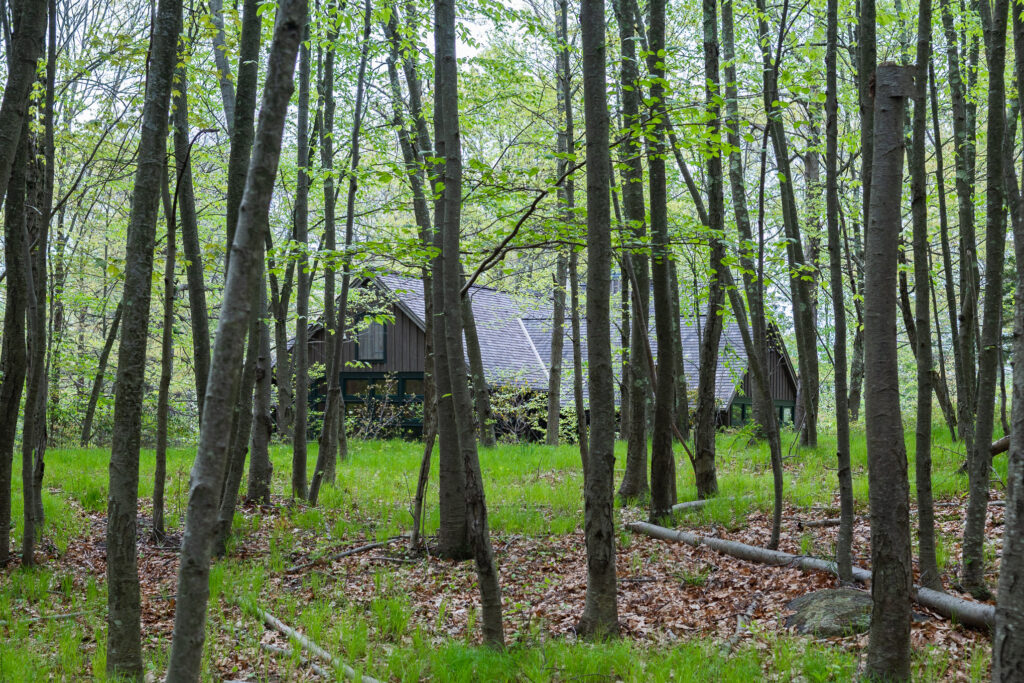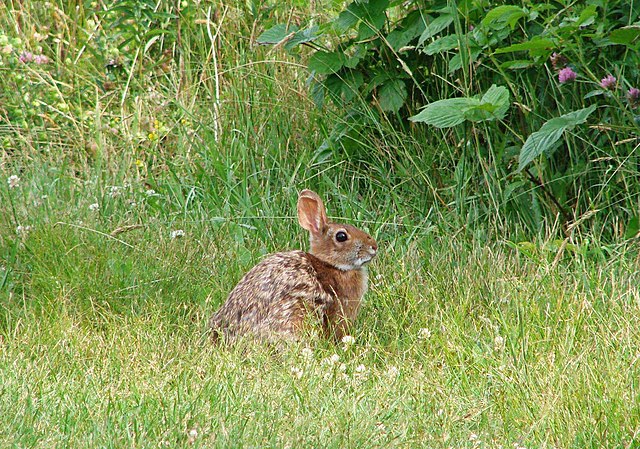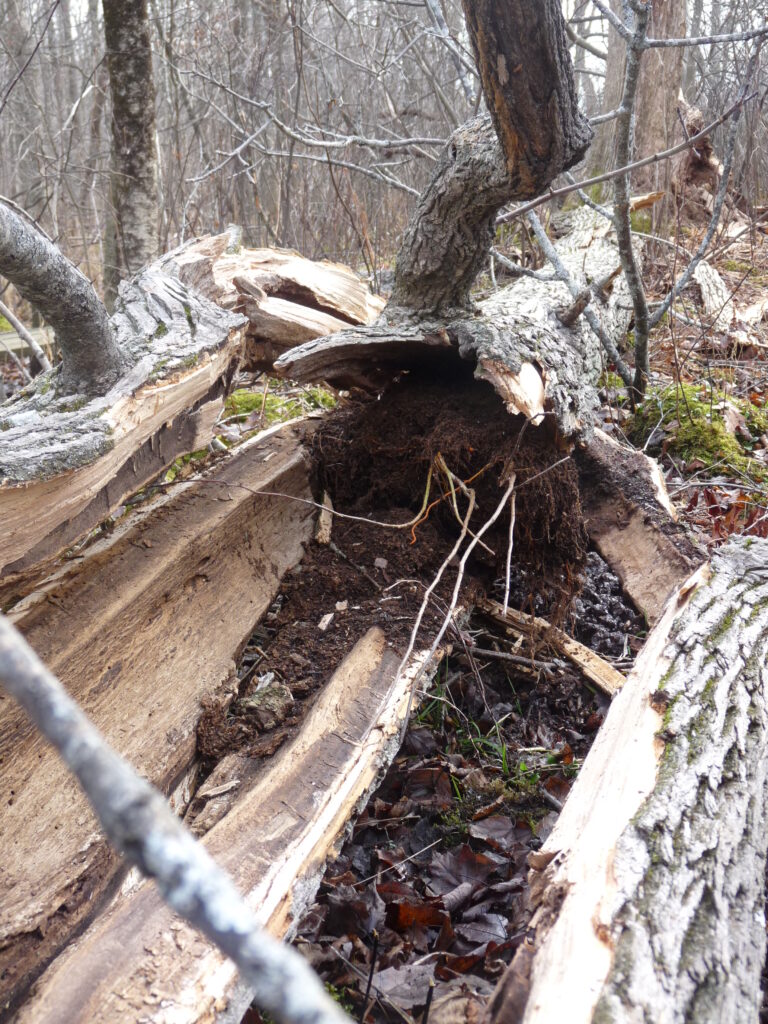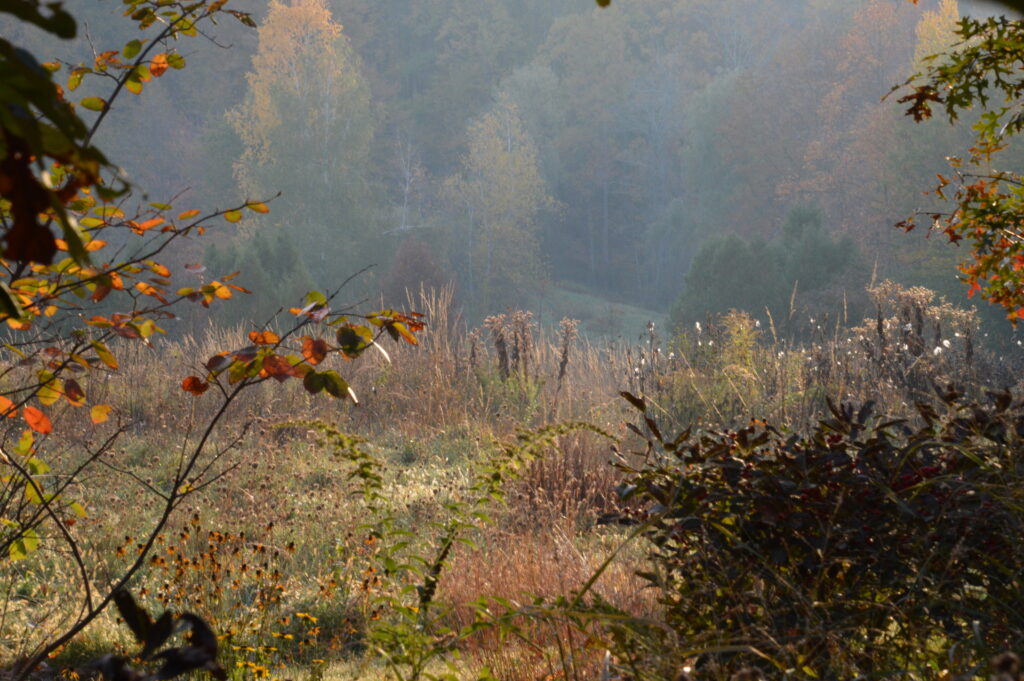Climate change, along with species loss, is the leading environmental challenge of our time. Warmer temperatures, drought, and more intense rainfall and flooding characterize the changing climate, which in turn are associated with increased severity and extent of windstorms, wildfires, and insect outbreaks. Not surprisingly, tree mortality has increased dramatically in many parts of the world.

Highstead’s natural landscape is no exception. Several intense storms and a severe insect outbreak over the past dozen years have resulted in a sharp uptick in tree death in Highstead’s forest. In 2011-2012, two tropical storms and one severe ice storm knocked down dozens of trees, reducing carbon accumulation (i.e., climate mitigation). More recently, the invasive emerald ash borer beetle killed 99% of mature ash trees between 2016 and 2021, further slowing total forest growth and carbon accumulation.

Photo Credit: U.S. Fish and Wildlife Service
The irony of increased natural disturbance is that despite being generally negative for ecosystem services such as carbon accumulation and wood products, it often increases landscape and vegetation complexity and therefore, habitat availability and biodiversity. For instance, at Highstead, the dense shrub layer that has developed in the gaps created by dead ash trees has contributed to a thriving population of the globally vulnerable New England Cottontail, which specializes in shrubby habitat. Were it not for these disturbances, this rabbit species would be much less likely to use this forest.

Even with increased tree mortality, Highstead’s forest – like New England and the temperate forest biome in general – is remarkably resilient and continues to grow and accumulate carbon. Indeed, carbon stored in live and dead trees and downed wood (“aboveground carbon”) reached its highest level in Highstead’s forest in 2021. A major reason for this is that carbon in trees killed by windstorms and insects is not lost as is commonly believed, but remains in dead standing and downed trees, often for decades as this ‘deadwood’ slowly decomposes. Meanwhile, nearby healthy trees respond with increased growth rates, and young trees regenerate in the gaps left by the dead trees.
Highstead’s 110 acres of forests store on average about 50 metric tons of aboveground carbon per acre, about 20% more carbon than the average southern New England forest. On a global scale, New England’s forests, south of Maine, store above-average levels of carbon. Consequently, New England’s forests are mapped as a global “climate stabilization area” in need of protection. Thus Highstead’s forest represents a small but important piece of that regional (and ultimately global) climate stabilization area.

Despite its relatively high carbon density, Highstead’s forest – like almost all temperate forests around the globe – is heavily modified by past human land use. Intensive timber harvesting occurred in the oak forest until the early 20th century, while forest clearance maintained the current maple forest in open pasture well into the early 20th century. The result is that Highstead’s forest stores only about 55-60% of its potential maximum carbon.
But Highstead’s roughly 39 acres of fields and meadow that were once forested are in much greater carbon debt than its forests. New England meadows store on average about 3 metric tons of aboveground carbon per acre, or only about 3% of the carbon they once stored in forest vegetation in the same location. Though comparatively carbon-poor, semi-natural meadows in New England provide other services including cultural heritage, expansive views, and habitat for species that specialize in open areas such as the purple milkweed and the globally “near threatened” eastern meadowlark.
Given the size of trees relative to grasses and wildflowers, it’s not surprising that forests are the most carbon dense (and biodiverse) vegetation type on Earth. However, if we include soil carbon, one ecosystem surpasses all others in carbon storage on a per acre basis: wetlands. The absence of oxygen in saturated wetland soils greatly slows decomposition and allows for the accumulation of vast amounts of organic carbon in deep soil profiles. Highstead’s approximately 3 acres of forested wetland store an estimated 120 metric tons of carbon per acre in their soil profile, which combined with 50 metric tons of aboveground carbon, makes it the most carbon-dense ecosystem at Highstead.
The next 25-30 years are critical in the effort to keep global temperature increases below 1.5 degrees Celsius and to mitigate the worst effects of climate change. Thus an important question is how much more carbon could Highstead’s landscape accumulate if it remained protected? By 2052, Highstead’s existing forests could accumulate another 14.5 tons of carbon per acre or over 1500 additional tons across the entire forest. Naturally reforesting a portion of the grassy areas could accumulate about 30 additional tons of carbon per acre over the same time period. In other words, an important piece of the climate solution is simply managing less and letting nature do more.
